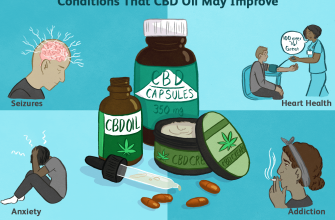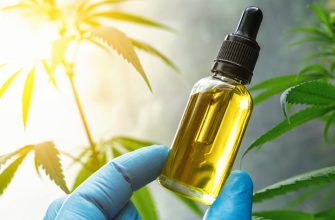Cannabis, CBD and autism are a tricky combination
CBD and THC Ease Behavioral and Health Issues Associated with Autism Spectrum Disorder
Autism Spectrum Disorder (ASD) is a condition that divides opinions. A catch-all term for similar atypical behavioral traits such as limited interests, repetitive behaviors, and difficulty interacting with others, autism is actually somewhat more heterogeneous than we neurotypicals might realize.
The term “spectrum” is used to describe the varying degrees of severity of autism, from high functioning at one end to non-verbal and severe mental retardation at the other. But this rather linear definition of ASD (Autistic Spectrum Disorder) does not capture the unique clusters of emotional, behavioral, and physical symptoms that many people with autism experience.
This may be why the cannabis plant, itself complex in composition, is reported to not only improve many of the behavioral difficulties associated with ASD, but also alleviate some comorbidities such as inflammatory bowel disease, sleep disturbances, and epilepsy.
What is autism?
Derived from the Greek word “autos” meaning “I”, the term autism was first used in the 1940s to describe children with the behavioral traits we now recognize as ASD.
Little is known why ASD develops. Genetics can be a factor, as can having children later in life. A possible link between heavy metal exposure during pregnancy has also been hypothesized.
In some cases, children begin to show signs of ASD around the age of two, leading to unproven theories that childhood vaccines may play a role. But whatever the cause, parents suddenly find themselves struggling to cope with a growing set of behavioral traits and physical symptoms, often without support or guidance from healthcare professionals.
If their child is on the more severe end of the spectrum, exhibiting self-injurious behavior or aggression towards themselves or others, doctors often prescribe a cocktail of prescription drugs such as antipsychotics, antidepressants, or sedatives to prevent violent outbursts.
Accompanying illnesses
As a deeper understanding of ASD develops, physicians are beginning to realize that violent outbursts and self-injurious behavior may themselves be manifestations of hidden or undiagnosed health conditions.
Comorbidities—the presence of multiple disorders in the same person at the same time—are common in ASD. Twenty percent of people with ASD also have epilepsy and other conditions, including gastrointestinal problems, anxiety, ADHD, sleep disturbances, and eating difficulties.
Some comorbidities are more obvious to watch than others. However, for a non-verbal child or adult in pain, a sudden outburst of violence may simply be a way of expressing discomfort. Thus, addressing the underlying cause of pain can often lead to improvement in behavioral problems.
In ASD, pain is caused by more than just physical sensations. For Justin Clark, who was diagnosed with autism as a university student, the sensory overload often experienced by people with autism causes him mental pain that manifests as anxiety.
“Sensory pain is also pain,” he explains. “My subconscious mind is constantly bubbling with a source of sensory anxiety.” For Justin, reducing sensory overload, in his case with the help of marijuana, calms his feelings of anxiety, allowing him to go about his daily activities – but more on that later.
Autism and the Endocannabinoid System
Scientists are beginning to suspect that there is an imbalance between excitatory glutamate and inhibitory GABA, both key neurotransmitters in neurodevelopment and overall brain function, may explain many of the behavioral features of ASD, as well as common comorbidities such as sleep disturbances and anxiety.
Understanding the importance of the endocannabinoid system in the development of autism may lead to a more holistic therapeutic approach to managing behavioral difficulties and health disorders.
Simply put, telling the sympathetic nervous system to return to a state of rest and relaxation just doesn’t work. A decrease in GABA tone has also been observed in many other diseases, including epilepsy, Alzheimer’s disease, schizophrenia, depression, and musculoskeletal disorders.
As the body’s main homeostatic regulator, the endocannabinoid system balances neural activity by releasing endocannabinoids (anandamide and 2-AG) in a retrograde manner, where they bind postsynaptically to cannabinoid CB1 receptors. This includes modulation of the neurological sweet spot between GABA and glut transmission.
While research into understanding autism tends to take a more reductionist approach, focusing on specific features of autism, perhaps a broader imbalance in the endocannabinoid system may explain why autism includes not only emotional and behavioral difficulties, but problems as well. with the gastrointestinal tract, epilepsy and sleep disorders.
It is well documented that endocannabinoid changes contribute to the development of various psychiatric and neurological disorders, and therefore it is likely that dysregulation of the endocannabinoid system may also be a key factor in the onset of autism.
Gene expression study
A study of gene expression in the post-mortem brains of autistic patients showed that they all have a common reduced expression of the CB1 receptor, which will undoubtedly affect the ability of the endocannabinoid system to maintain neurological homeostasis. Lower levels of anandamide (AEA), an endogenous cannabinoid, and related lipid signaling molecules N-palmitoylethanolamine (PEA) and N-oleoylethanolamine (OEA) were also noted in 93 children with autism, suggesting that some kind of endocannabinoid deficiency may be a contributing factor. .
Other changes in the endocannabinoid system are evident in autistic children, although it is not clear if this has a causal effect in ASD. In a study comparing the expression of cannabinoid CB2 receptors in autistic children with healthy controls, ASD patients showed significant increases in CB2 levels.
It is possible that this increased CB2 expression is simply a compensatory action of the endocannabinoid system acting to modulate the elevated inflammatory state often found in autism, and that selective targeting of CB2 receptors may help improve some of the symptoms of ASD and comorbidities caused by immune system dysregulation.
Anandamide, named after the Sanskrit word for bliss, is also being researched as a pharmacological target to improve the impaired social functioning commonly associated with ASD. Using a mouse model of autism, the scientists found that blocking the production of fatty acid amide hydrolase (FAAH), the enzyme that breaks down anandamide in the body, reversed the rodent’s marked social impairment.
The scientists also showed how oxytocin, the feel-good neuropeptide released from hugging, controls social reward by driving anandamide-mediated signaling at CB1 receptors. This observation led researchers to speculate that, at least in mice with ASD, oxytocin-disrupted anandamide activity may play a role in the development of socially disturbed behavior.
It would then seem that understanding the significance of the endocannabinoid system in the development of autism could lead to a more holistic therapeutic approach to managing the complex clusters of behavioral difficulties and health disorders in ASD patients.
Cannabis and autism – Yuval’s story
Compounds in the cannabis plant, specifically tetrahydrocannabinol (THC) and cannabidiol (CBD), are known to interact with the endocannabinoid system, which may explain why cannabis in its various guises appears to reduce the suffering of many children and adults with ASD.
As with children with severe epilepsy, parents of children with severe autism are most likely to publicly report giving their children marijuana.
Yuval, 27, from Israel, has severe autism and is non-verbal. As he grew up, medications prescribed by doctors to control his violent outbursts, self-injurious behavior and high anxiety did little to control his behavior or improve his quality of life.
“I think people who don’t live with severe autism can’t really understand what it means,” explains his mother, Abigail Dar. – This is life in the shadow of hell. You live with a person whom you adore and love, and he is restless, anxious and screaming. He walks back and forth, and you don’t understand what he wants. And he drives the whole house crazy, leaving himself self-torture and breakdowns, just like everyday everyday things.
When Abigail and her husband first considered giving Yuval cannabis, ASD was not a qualifying condition for medical cannabis in Israel (although childhood epilepsy was). Thanks to Dar’s relentless campaigning, Yuval eventually got the recipe.
“It was like magic,” says Dar, describing the changes that cannabis has made to Yuval’s quality of life. “My son became a calmer person, more focused, with a smile on his face, and for a year he did not show any self-torturing behavior or any outbursts, which is a miracle for me and for him. It was a life changer, you know you can spend time with him without being scared all the time.”
In Yuval’s case, he responded best to CBD-rich whole cannabis vegetable oil. CBD-dominant non-THC cannabis products tended to increase his hyperactivity and anxiety. However, some children may experience significant improvements with CBD oil alone.
For some, CBD oil is enough – Niall’s story
Niall McCartney from Dublin was only a year old when a febrile seizure changed his life forever. Any language he acquired was forgotten. Niall seemed to retreat into a secluded world filled with anxiety and self-injurious behavior. He was eventually diagnosed with mild autism, as well as ongoing seizure activity and an acquired head injury caused by the initial seizure.
Desperate to find a solution, Sharon’s mom scoured the internet for multiple reports of cannabis oil providing relief to children with ASD. It was impossible to get Niall a medical prescription for cannabis in Ireland, so Sharon and her husband decided to try CBD oil.
“The first thing the self-torture stopped,” recalls Sharon. “The thumping in his head stopped…and then the hyperactivity stopped…So you could see his system was calming down…all those feelings that were in total overload came back to normal. ”
But perhaps the most dramatic change came just nine days after starting CBD oil, when Niall spoke to his mom for the first time in his life. “He told me, ‘Mom, my head doesn’t hurt anymore and I’m not afraid anymore,’” Sharon recalls. “It was a defining moment for me, as his mother, when I just said I would never stop.”
Niall, now 9, continues to make good progress, much of which Sharon attributes to the CBD oil he takes.
“It’s just that life changes,” she says. – It gave Niall a chance to live his life and not exist in a world he doesn’t belong to… I never thought his life would be like this. I never thought he would have the quality of life he has now.”
Cannabis as a treatment for autism – Evidence
Given the excellent safety history of CBD and the significant body of research on childhood epilepsy, it is not surprising that the first clinical trials investigating whether cannabis provides some relief to children with ASD favored CBD-rich cannabis oils.
In the past couple of years, there have been three studies in Israel in which about 2,500 children and adults with ASD received cannabinoid treatment through the national medical cannabis program (largely thanks to Abigail Dar’s campaign).
The first study looked to see if CBD oil would help improve four comorbidities commonly associated with ASD: symptoms of hyperactivity, sleep problems, self-harm, and anxiety.
The 53 children received CBD-rich cannabis oil for an average of 66 days. Approximately two-thirds of the subjects experienced an improvement, namely a decrease in self-injury and attacks of rage, hyperactivity and sleep problems. The use of CBD improved anxiety in 47.1% of children. It should be noted that these findings were largely based on reports from parents, and their subjectivity should not be underestimated.
Retrospective Studies
The Israeli scientists also conducted a retrospective study analyzing data from 188 children with ASD who were primarily given cannabis oil (30% CBD to 1.5% THC) for six months.
When using the self-reported questionnaire format, which was answered by parents or guardians when the subjects were unable to do so, the results were again encouraging.
After six months of cannabis treatment, 30.1 percent of participants reported a significant improvement in their condition, with another 53.7 percent reporting moderate benefit. Crucially, only minimal side effects were noted.
In addition, positive changes were also noted in quality of life markers such as the ability to shower and dress independently. Remarkably, after six months, 84% of ASD subjects with epilepsy reported “disappearance of symptoms.”
That same year, Dr. Adi Aran published another retrospective study with a smaller cohort of 60 children with ASD, this time using
Another study at King’s College London will examine how the combination of CBD and cannabidivarin (CBDV) affects arousal/inhibition imbalances in adult males with autism.
Red Flag: THC Omission
THC-rich cannabis is conspicuously absent from any of the clinical studies, effectively ignoring the experience of a significant number of adults and children with ASD who say that without the presence of THC, they simply don’t get the same relief from cannabis.
When 31-year-old software tester Justin Clark first tried cannabis to control his ASD, he had to take everything the dealer could give him. Medical cannabis was not legal in the UK at the time, so it was given a high THC cannabis strain by default.
“The first time I tried it,” Justin recalls, “I was sort of uplifted, felt uplifted, like a weight had been lifted off my shoulders.”
Since childhood, Justin has experienced sensory overload, which, along with ADHD, meant that he was unable to focus on or enjoy individual feelings.
“It’s like a graphic EQ on a stereo where all the touch sensors have a slider,” Justin explains. “But by default they’re too high and cannabis helps me drop them and focus on the individual ones. Which helps me avoid or mitigate sensory overload. if it is already happening.”
Cannabis also made Justin feel more relaxed in social situations.
“I’m better able to relax around others and join in the conversation,” he says, especially in group situations. I feel much more comfortable when I take a little marijuana. It seems to help me just tune in to what’s going on. And it’s easier for me to follow what everyone else is saying.”
Thankfully, the legalization of medical cannabis in the UK in 2018 means Justin now has a legal prescription for his drugs. He has experimented with various cannabinoid ratios over the years, including more CBD-rich foods, but for him, at least, THC alone reduces the sensory overload he finds so overwhelming. And without being in a constant state of repression, Justin is now able to embrace life in a way he never imagined, joining a running club, breaking into stand-up comedy and becoming a vocal British medical cannabis activist.
Perhaps this is where the scientific and medical community goes wrong, deciding what is therapeutically beneficial for people with ASD based on assumptions that do not take into account the inner connections and experiences of the neurodiverse or the complexity of the cannabis plant. By unnecessarily removing THC from the exploratory conversation, we are doing both a serious disservice.





